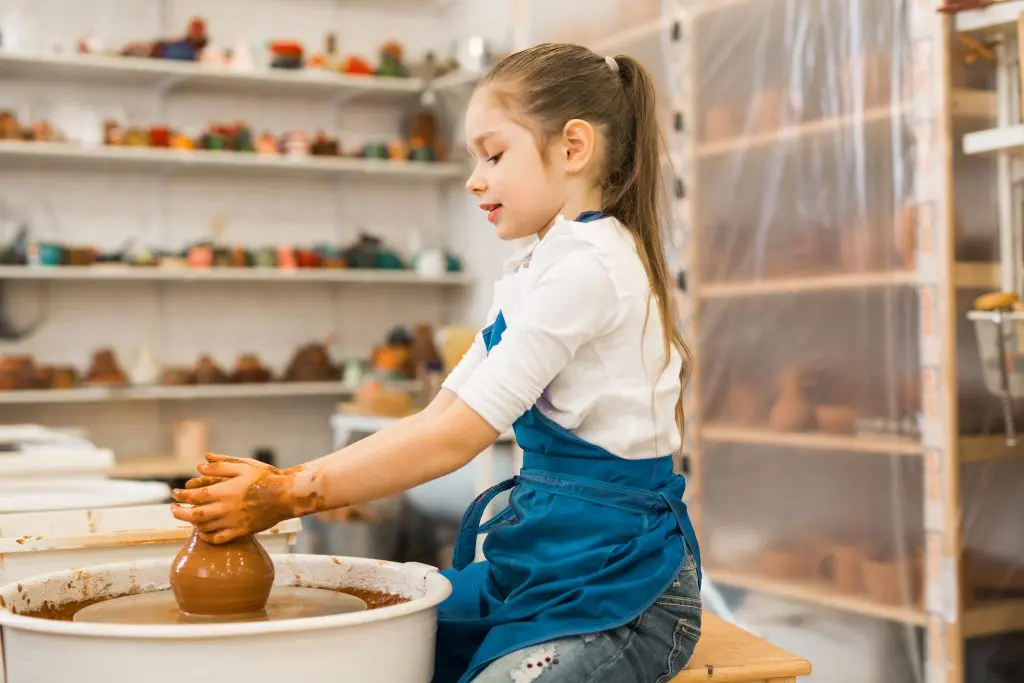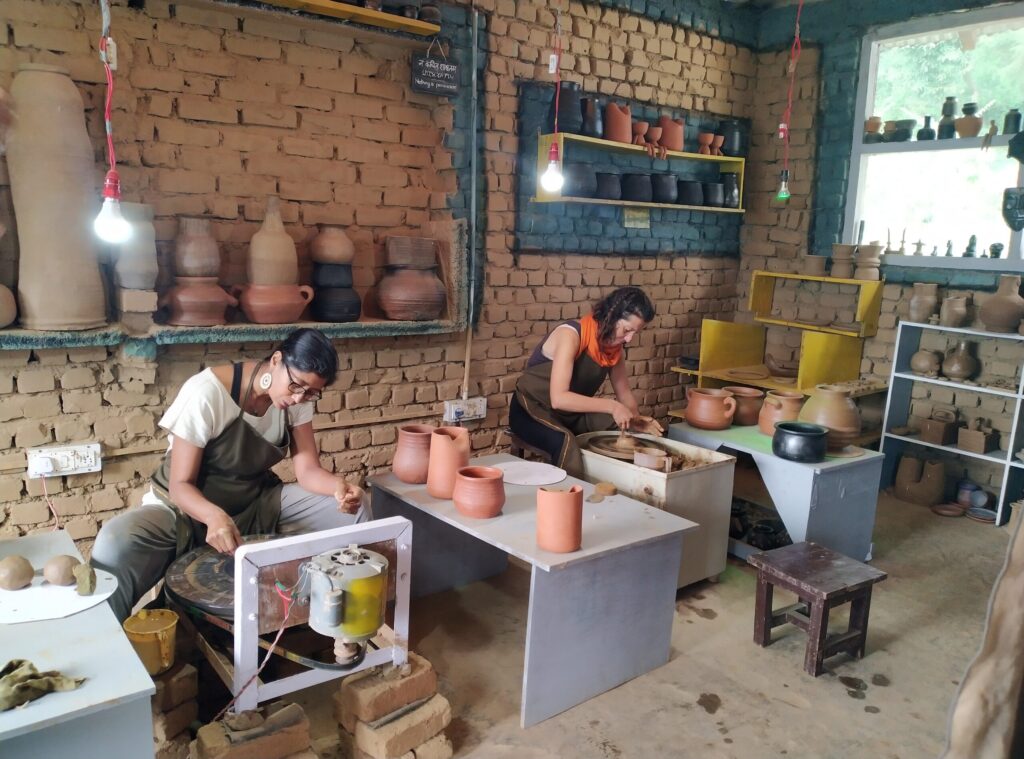On a sun-drenched afternoon in Kerala’s cultural heartland, a group of children gathers around a potter’s wheel, their hands caked in wet clay, their faces lit up not by screens—but by discovery.
This is Clayfingers, a restored 1950s brick-and-tile factory in Thrissur that now functions as one of India’s most sought-after pottery residencies. And it’s not alone.
Across the country, from the pine-scented hills of Himachal Pradesh to the high-rises of Mumbai, a quiet revolution is underway—one that’s replacing screen time with kiln time. Parents, educators, and artists are embracing pottery as both an art form and a therapeutic exercise, offering children a chance to reconnect with their senses in a world increasingly driven by digital noise.
A Return to the Wheel
At the heart of this movement are studios like Dharamkot Studio, nestled in the Himalayan foothills, and Claybotik in Jaipur, where traditional Indian stoneware meets modern design. These studios are part of a larger resurgence in craft-based education, with pottery serving as a medium for mindfulness, motor skill development, and creative confidence.
“It’s not just about making pots,” says Deeksha S. Gupta, founder of Claybotik. “It’s about slowing down, learning patience, and building something with your hands.”
In cities like Bengaluru and Mumbai, where structured academic programs often dominate children’s schedules, these retreats offer rare spaces of unstructured exploration. The Pottery Lab, led by ceramic artist Rekha Goyal in Mumbai’s Bandra neighborhood, introduces urban families to the grounding rhythm of the potter’s wheel. Sessions here often start with basic hand-building and evolve into abstract sculptural play—culminating in fired, glazed pieces that children can take home as tangible trophies of their time unplugged.
Learning Through Clay—and Stillness
In Rishikesh, at the foothills of the Himalayas, Rishikesh Pottery Studio offers courses focused on centering, coiling, slab building, and surface carving—techniques that help children develop spatial understanding and motor coordination. The studio is also part of a spiritual ecosystem, giving families a chance to combine artistic learning with yoga, meditation, and forest walks.
Meanwhile, in Bengaluru’s Clay Station, children not only learn sculptural techniques but also receive mentoring on how to set up their own studios—paving a path toward sustained artistic engagement rather than a one-time summer activity.
What ties these diverse studios together is a common vision: creating immersive environments where tactile learning is valued over screen engagement.
The Shilaroo Project: Art Meets Ecology
Perhaps the most unconventional of these retreats is The Shilaroo Project in Himachal Pradesh. A collaboration between potters, writers, and retired army officers, the project blends art with rural regeneration. Set amidst apple orchards and wildflower trails, the residency emphasizes sustainability as much as sculpture.
“When children come here, they’re not just learning pottery—they’re learning how to observe the natural world,” says artist Virangna Kainthla, one of the project’s founding members. “It’s a kind of education that classrooms can’t provide.”

A Movement Beyond Summer
While many of these retreats spike in popularity during school holidays, the growing interest has prompted year-round programming. Some studios now offer weekend drop-ins, long-term residencies for serious learners, and even certification courses.
Educators say the trend reflects a deeper shift in how Indian families are reimagining education.
“In a time when creativity is being reduced to click-and-drag software,” says Goyal, “pottery brings back the idea that creativity begins in the body—in the fingers, in texture, in the resistance of the material itself.”
The Bigger Picture
The revival of pottery in India has roots in centuries-old traditions but is now being shaped by a modern need: the desire to reconnect, recalibrate, and reset. In a post-pandemic world, where mental wellness and screen fatigue are at the forefront of parental concerns, these studios are emerging not just as creative outlets but as sanctuaries.
And while every child may not become a potter, those who spend a few days molding clay are almost certain to come away with something equally enduring—a sense of calm, a new respect for craftsmanship, and the simple joy of shaping something beautiful with their own two hands.


